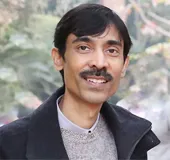
In its efforts to achieve the Sustainable Development Goal of ending hunger, achieving food security, improving nutrition and promoting sustainable agriculture, India will require a comprehensive approach along with effective implementation of initiatives .
With as many as 194.6 million (or 15% of the total population) hungry people, the country has been ranked as the most undernourished in the world by the FAO. It is evident that the benefits of growth have not been distributed equally.
An undernourished population suffers from numerous health disorders. Children and youth experience nutritional deficiencies of various kinds. The undesirable impacts of malnutrition are significant in adults too.
The major risk among newborns and their mothers is loss of life. With respect to children under five years of age, it is noted that a large number of deaths (50%) occur mainly due to poor nutrition. Those who survive experience serious health problems at various stages of their lives.
India’s nutrition profile is alarming. 39% of children below 5 years are reportedly stunted (low height for age), 15% are wasted (low weight for height), 29% are underweight (low weight for age), 2% are overweight (above normal weight for height), and nearly 70% of children aged between 6 and 59 months are anaemic (deficiency of red cells or of haemoglobin in blood).
As children grow into adolescence, problems of overweight (11%) and obesity (2%) are observed. Anaemia is also prevalent with 56% of young girls and 30% of young boys in the age-group 15-19 years suffering from the problem.
Among adults, the Body Mass Index (BMI), i.e., ratio of weight-for-height, of ever-married women (33%) and men (28%) in the age group 15-49 is below the norm. On the other hand, about 15% women and 12% men are either overweight or obese. Moreover, anaemia is prevalent in pregnant women (58 %) and ever-married men (24 %) in the 15-49 age group.
Nutrition data generated from the fourth National Family Health Survey (NFHS), 2015 of select Indian states show abnormal weight (or BMI) of women and men. With respect to proportion of underweight population, Bihar and Madhya Pradesh are the worst off. The problem of overweight, on the other hand, is observed in the states of Goa, Andhra Pradesh and Sikkim. With respect to anaemia, NFHS — 4 data show high levels in women ranging from 45% in Karnataka to as much as 63% in Haryana.
The nutrition profile of India, thus, presents wide variations in different states, and across population groups. Generally, the condition of poor people, with respect to intake of calories, proteins, vitamins and micro-nutrients, is inferior in rural areas, poorer states, and in city slums. On the other hand, the middle and high income population concentrated in Indian cities has become victim to lifestyle diseases, and binge eating disorders caused by increased availability of processed foods and sugary drinks.
Policy and programme interventions by the government to address the issue of malnutrition have met with some success, evident from the decline in proportion of undernourished persons from 24% in 1990-92 to 15% in 2014-16.
On numerous occasions, though, implementation inefficiencies have been highlighted. For example, with respect to Integrated Child Development Services that have benefitted over 100 million people including children, pregnant women and lactating mothers, it is observed that problems are being experienced in ensuring supply of quality food, and its uniform distribution.
Besides government interventions, judicial and civil society activism combined with electoral dynamics and the indirect impact of related government policies on corruption and economic growth have also led to bringing down the malnutrition rates. For example, the Right to Food Campaign (launched in March 2014), which is an informal network of individuals and organisations, is the result of a PIL.
The national goal of eliminating malnutrition, however, may not be accomplished unless wide ranging measures are taken.
Nutrition interventions and tracking progress cannot be done without availability of sufficient information and reliable, updated data, and operationalisation of a national nutrition surveillance system. Thus, there exists the need to collect and maintain nutrition data by state at a 2-3 year interval using innovative technology.
In a positive development of digitisation of existing data collection infrastructure, the Ministry of Women and Child Development has launched an Information and Communication Technology enabled Real Time Monitoring (ICT-RTM) module of its Integrated Child Development Services (ICDS) programme, which will specifically monitor nutrition services.
At times, malnutrition occurs not because of paucity of funds, but due to ignorance. Thus, there exists the dire need to run a nutrition communication campaign which would help children and communities in understanding how they should respond to their nutritional needs.
The implementation of the National Food Security Act has failed in some states. Uttar Pradesh is a case in point where data samples show that at places experiencing famine-like conditions, barely half of the poor families had eaten any pulses in the last 30 days. Such problems will continue unless greater efforts are made to strengthen and systematically monitor the progress of existing initiatives (such as the Public Distribution System, Mid-day Meal Scheme, and the ICDS).
Anganwadi centres were established under ICDS to provide basic health care education and services in rural areas of the country. Many workers are unable to play an effective role in attending to the problem of malnutrition because of inadequate training. Organisation of regular orientation programmes, exposing workers to the new techniques available, and supporting them in implementation of schemes would be a useful step in improving the situation of nutrition.
Much of the health problems associated with malnutrition are observed in poorer parts of the country. This calls for larger investments in the areas of irrigation, power, roads, water-shed development, skill building and employment generation.
The high-burden states would benefit if successful practices followed in other parts of the country are shared with them. For example, valuable lessons on food fortification can be learnt from practices followed in Gajapati district of Odisha where training was given to school staff engaged in preparing mid-day meal for school children so that they are able to fortify the rice with iron for increasing its nutritional value.
In India, a sizeable population defecates in the open, and these sections of the society either give no importance to use of toilets, or are not in a position to build one within their living spaces. This age-old practice observed in rural areas as well as among the city’s slum dwellers must undergo a change by informing communities about the associated ill-effects on human health and nutrition, and by providing hygienic facilities. Numerous studies have shown that poor sanitary conditions cause diarrhoeal diseases which in turn result in stunting among children.
Finally, government at various levels along with the sectors of the society must display shared sense of responsibility to end malnutrition.
The views expressed above belong to the author(s). ORF research and analyses now available on Telegram! Click here to access our curated content — blogs, longforms and interviews.




 PREV
PREV


